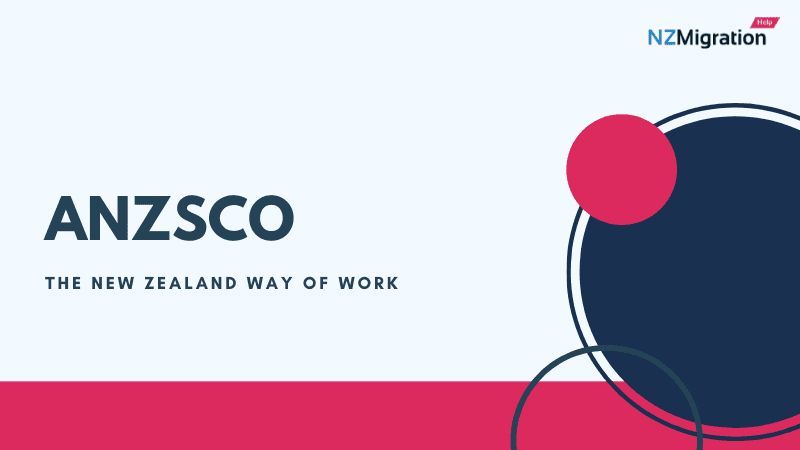Visa application is a very strict and highly scrutinized process. The INZ receives thousands of visa applications each year that do not meet the visa requirements. It’s your duty to ensure your eligibility by meeting the requirements and submit the necessary documentation.
You might want to shift to New Zealand for work, well, the first thing is, you must be familiar with the work culture and the professional aspects with respect to your specific skills in the new country. This will help you to apply for the correct type of visa in the work group. The Skill Shortage List invented by the government of New Zealand is relevant for your visa application and also plays a vital role in your job search in the country. A thorough knowledge about ANZSCO is imperious if you are preparing for a job in the country under the Skilled Migrant category.
What is ANZSCO?
ANZSCO is an abbreviation for “The Australian and New Zealand Standard Classification of Occupations”. It is the joint effort of the Statistics New Zealand, Department of Education and Training, along with the Australian Bureau of Statistics that is aimed to compile, examine and circulate occupational classifications of the country’s labor markets on the basis of various levels of skill and expertise.
How does ANZSCO work?
The structure of ANZSCO has a total of five hierarchy levels, the major group, the sub-major group, the minor group, the unit group, and the occupation levels. All the groups at the most comprehensive level of classification are called as occupations. These are clustered to form a unit group, which in turn are clubbed into minor groups. Minor groups are combined to form sub-major groups, which in turn are combined at the highest level to form major groups. It plays a vital role in assessing the skill in a particular occupation in the context of the country and is considered as a major factor in assessing the eligibility of a visa application under the skilled migrant category.
ANZSCO rates the levels of skills from 1 to 5 where the skill level is judged on the intricacy and the range of tasks involved with regards to a specific occupation and therefore a higher level of intricacy denotes a higher occupational level of skill.
ANZSCO Skill Levels
The five skill levels in ANZSCO are well-defined in terms of training and formal education, earlier experience, and on-the-job training. The determination of the boundaries between skill levels depends on the following descriptions.
Skill Level 1
Occupations at Skill Level 1 should be equal to a bachelor’s degree or a higher qualification. The applicant must hold at least five years of relevant job experience, which can be used in place of the formal qualification. In some instances, relevant experience and/or on-the-job training may also be necessary in addition to the formal qualification.
Skill Level 2
Occupations at Skill Level 2 should be equal to higher than any of the following:
- NZ Register Diploma or
- AQF Associate Degree, Advanced Diploma or Diploma.
The candidate should possess at least three years of experience related to the field which can be used in place of the formal qualifications listed above. In some instances, relevant experience and/or on-the-job training may also be necessary in addition to the formal qualification.
Skill Level 3
Occupations at Skill Level 3 should be equivalent to any one of the following:
- NZ Register Level 4 qualification
- AQF Certificate IV or
- AQF Certificate III including at least two years of on the job training.
The candidate should possess at least three years of experience related to the field which can be used in place of the formal qualifications listed above. In some instances, relevant experience and/or on the job training may also be necessary in addition to the formal qualification.
Skill Level 4
Occupations at Skill Level 4 should be equivalent to any one of the following:
- NZ Register Level 2 or 3 qualification or
- AQF Certificate II or III.
The candidate should possess at least one year of experience related to the field which can be used in place of the formal qualifications listed above. In some instances, relevant experience and/or on the job training may also be necessary in addition to the formal qualification.
Skill Level 5
Occupations at Skill Level 5 should be equivalent to any one of the following:
- NZ Register Level 1 qualification
- AQF Certificate I or
- Mandatory secondary education.
For some of the occupations, a shorter duration of on job training may be required in addition to or instead of the formal qualification. While for some occupations, no formal qualification or on-the-job training may be required.
Additionally, for all the above-mentioned skill levels the occupation you choose must be listed therein. And you must also fulfill the criteria of the Long-Term Skill Shortage List. The occupational registration of your employment is approved under New Zealand law along with your provisional or full occupational registration.
